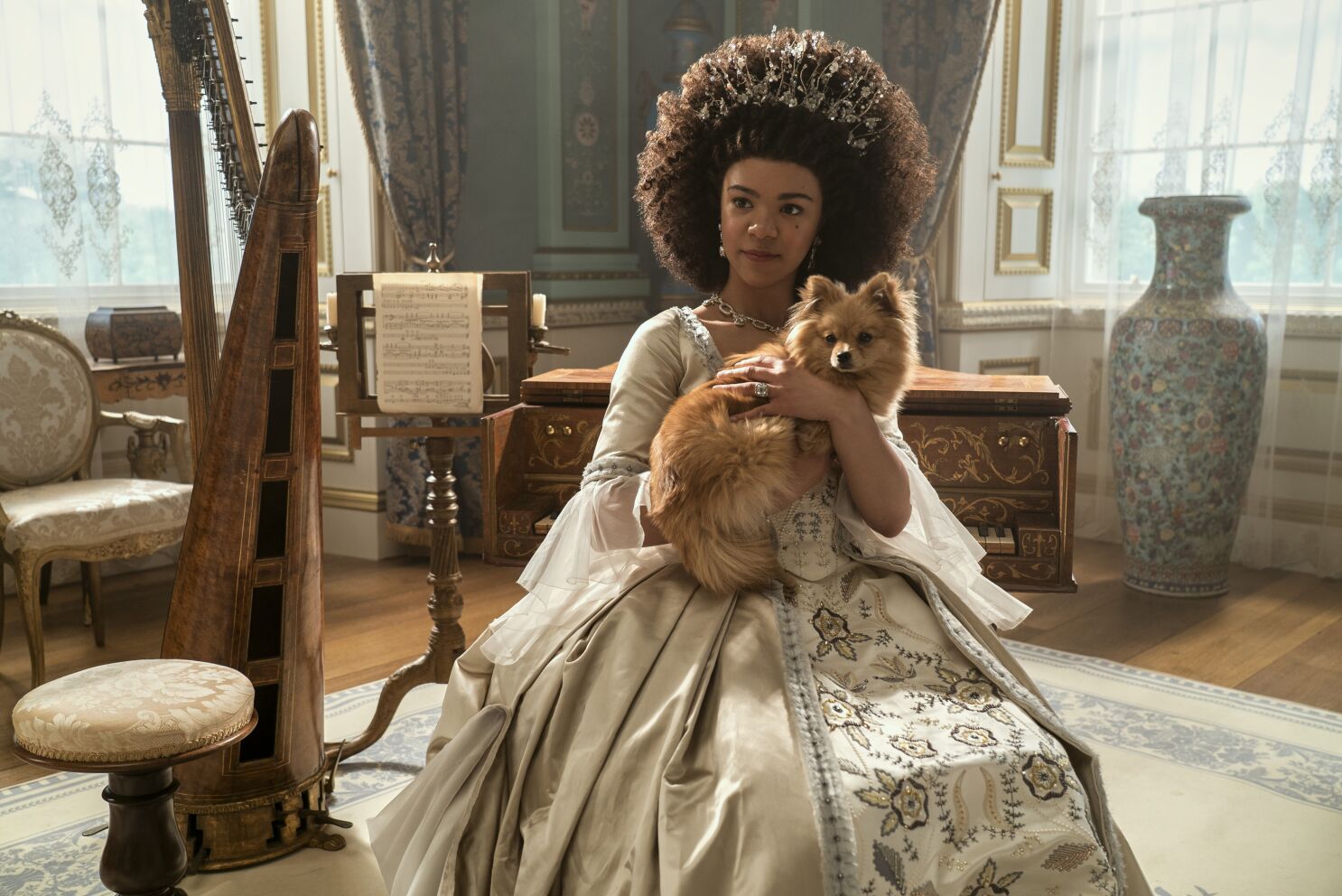After the massive success of the first two seasons of “Bridgerton,” fans were eager for more. The announcement of a spinoff miniseries following Queen Charlotte gave fans plenty to buzz about. The show would be about Queen Charlotte and the beginning of her relationship with King George. As the Queen herself and the nature of her marriage with the King were often hinted at in “Bridgerton,” it is no wonder that fans were curious to explore the relationship’s storyline. While some aspects of the marriage are known based on real historical events, the show is created as a historical drama. Based on characters from author Julia Quinn’s novels, the “Bridgerton” universe all takes place in the Regency era.
The miniseries follow two plotlines going through Queen Charlotte’s life. The first flashes back to when Charlotte was signed off to be married to the King of England and Ireland. She meets the King and encounters unexpected problems in the first few days of her marriage. It is up to her to step up to her role as Queen to help the country and decide whether or not she wants to stand by her King. The second plotline occurs in the current timeline of the “Bridgerton” series. The Queen is pressuring at least one of her 13 children to marry and produce another heir to the throne to continue the line of succession. Flashing between both plotlines helps demonstrate the life of the Queen in both the past and present. Additionally, it demonstrates the change that the Queen has gone through by comparing the two times in her life.
As soon as Queen Charlotte first meets King George III, the chemistry and connection between the two is instantaneous. As the show continues, the chemistry only builds and the tension between the two is obvious. This enhances the watching experience, as the chemistry hooks you to the screen, wanting to see how the couple’s story unfolds. This very chemistry not only propels the story forward, it makes the audience want to root for the couple to sort through their issues.
Alongside the wonderful chemistry between the young couple, the acting performances from the show’s cast are phenomenal. Phenomenal performances include acting from India Amarteifio (young Queen Charlotte), Corey Mylchreest (young King George), Arsema Thomas (young Lady Danbury) and Michelle Fairley as Princess Augusta. Those portraying the younger actors can provide a performance that is reminiscent of the original actors. This helps keep the continuity in the show as the portrayals line up and feel like they are all the same. Actors for the current timeline such as Golda Rosheuvel (Queen Charlotte), Adjoa Andoh (Lady Danbury) and Ruth Gemmell (Violet Bridgerton) continue to shine in their roles.
A major highlight for this miniseries, just as with any other Bridgerton plotline, is the writing. The writers for this universe create scripts that translate beautifully onto the screen. Paired with the phenomenal acting, it becomes a binge-worthy show that keeps audiences glued to their screen. The writing progresses the show just right to keep the story engaging. The writing has dialogue flowing naturally with romantic declarations, passionate speeches and witty lines, providing for an entertaining and engaging watching experience.
An interesting aspect of the show is how it develops its background characters. Although the “Bridgerton” series mainly focuses on the children, this show can hone in on the background characters that often play a part in the matchmaking for the couples. This time, the audience can experience their stories and learn more about them. This is especially so for Queen Charlotte, her story and the influences that have carried on to the present.
Despite the show being a fictional drama, it still holds onto aspects of history that can enable the audience to learn more about the royal couple. While the royal couple has its ups and down in their role in history, the show is a fictional story of how their personal lives could have been. It is an interesting take on the royal couple with aspects that are speculated in history.
Another major aspect of the show is dealing with major themes such as mental health and racism. As noted in history, King George III dealt with mental health issues that affected his ability to rule. The show does not attempt to hide this, rather making this a major topic in the show. The audience sees how the King himself and the Queen work through his illness. The topic of racism is also addressed, especially as history speculates Queen Charlotte as the first and prominent figure to have African ancestry. This is influential in the show as it sees a person of color in a very high position that can influence and change history to represent POC communities. Both topics make for an impactful show, making it more than a typical romance story.
Verdict: “Queen Charlotte: A Bridgerton Story” excels in many aspects that make it a binge-worthy show for romance and Regency-era fans.









